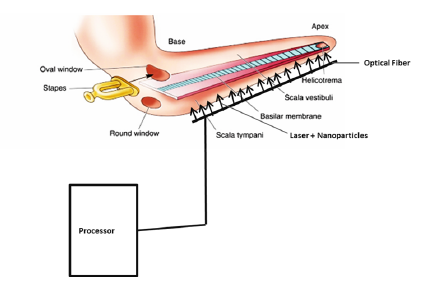Competitive Advantages
- Reduced/no tissue damage
- Improved spatiotemporal resolution
- Higher transduction fidelity
- Eliminates unwanted heating/stimulation that occurs with infrared stimulation
Summary
A novel technology has been developed to stimulate electrically active biological cells using visible light and metallic nanoparticles possessing plasmonic properties. Electrodes in the implants are invasive and over time repeated stimulation can lead to tissue damage. Alternatively, infrared lasers can invoke in vivo responses, giving better spatial resolution as compared to electrical stimulation. However, infrared laser increases the temperature of the surrounding tissue as well, which can cause thermal damage or unwanted stimulation.There is a need to overcome these challenges, as well as improve the overall performance of such devices. Designs using metal nanoparticles possessing plasmonic properties can be tuned to respond to visible wavelength light sources. This allows for plasmonic stimulations that give higher spatial resolutions without heating the tissue and are induced wirelessly.

Cochlear Implant Prototype
Desired Partnerships
- License
- Sponsored Research
- Co-development